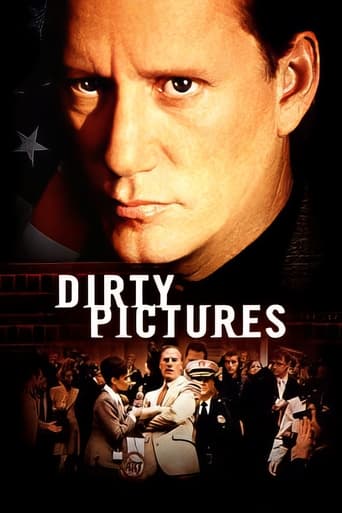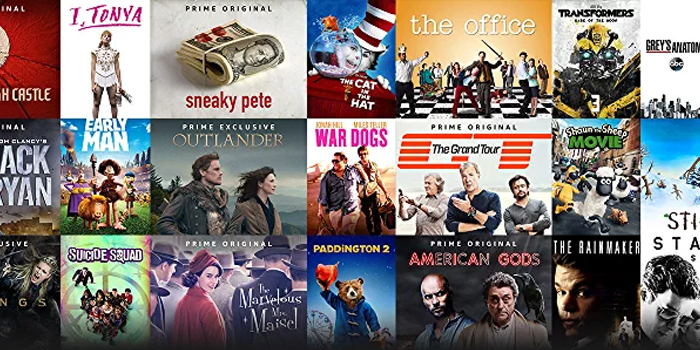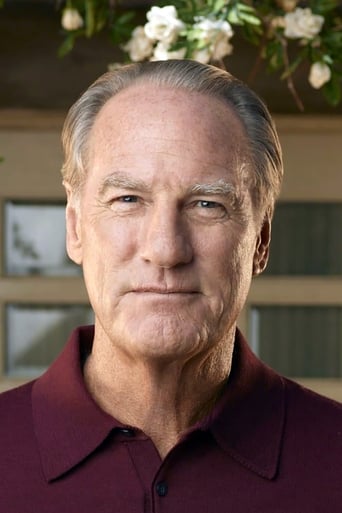Dirty Pictures (2000)
A Cincinnati museum director goes on trial in 1990 for exhibiting sadomasochistic photographs taken by Robert Mapplethorpe.
Watch Trailer
Cast
Reviews
Very very predictable, including the post credit scene !!!
Perfect cast and a good story
Let me be very fair here, this is not the best movie in my opinion. But, this movie is fun, it has purpose and is very enjoyable to watch.
It is a whirlwind of delight --- attractive actors, stunning couture, spectacular sets and outrageous parties. It's a feast for the eyes. But what really makes this dramedy work is the acting.
By the standards of the 'prosecution' in this case, many of the earliest artistic objects unearthed by archaeologists would be considered "smutty" and unworthy of display in any museum or art gallery. Think about the "First Amendment" when you think of whay is written and painted on walls all the time since 1990, when the case began, or moreThe film-making process shown necessarily displays many Mapplethorpe pieces. It's a pity that this should be the case, as they scandalise what might otherwise could be a 'family' movie.That Rushdie and others are interviewed makes this as much a fiction of journalism as a fiction by a writer.Beware the temptation to laud Barrie (James Woods) in "winning" over the Cincinnati prosecutor, who comes across (with the techniques of the 'anti' side) as sleezy, but well intentioned in a morally broken way.That the Judge was held somehow responsible, and soon voted out of office, says much about the USA's system of justice and not much that's good about about it's elector's reasoning or intellect. But, in the end, voting is subjective -- and "local".
***SPOILERS*** ***SPOILERS*** The film has its basis in the controversial art of Robert Mapplethorpe. Mapplethorpe's work had been supported by the National Endowment for the Arts. Nevertheless, in the film, as was true in real life, there is a trial over the Cincinnati Center for Art gallery's exhibit of the Robert Mapplethorpe photography. The trial results from the fact that the moralistic half of the community opposed the exhibit as pornography and not art. The only protagonist for the exhibit is the gallery's director, Dennis Barrie. As the pressure from the community and its authorities escalates it causes even his staunchest supporters and his board of directors to waver. Finally, Cincinnati sues him and he faces a civil trial. An interesting inset of the film is the depiction of the Jury whose characters reflect the points of view of a cross-section of America which are interjected throughout the film to highlight the ethical and legal dilemmas. Another interesting facet is the cutaways showing celebrities and national leaders like Salmon Rushdie, Barney Frank, and Fran Liebowitz commenting on the ethical and legal aspects of the issue at trial. There is even an injection showing pressure from the US congress posing threats to future funding for the National Endowment for the Arts. Various experts on the history and nature of art and what should be called art are called to testify. As the trial progresses, there are threats to his life and the lives of his wife and children. He even faces the possibility of jail since the Sheriff is out to get him, saying he is breaking city statues as well as federal law defining pornography. During the trial the Judge is even scene making derisive remarks which seem to be aimed at undermining Barries' case. His current job is threatened as well as the future of his career as an art gallery director. The threats continue to worsen during the trial and his children are harassed at school. His wife begins to weaken as she does not want to lose their home and way of life nor to have her children physically or psychologically harmed. When she weakens, she begins to pressure him to back down. He sees it as a no win situation unless he persists. He sees maintaining his position as maintaining his integrity and commitment to the values of freedom of expression in speech as well as art in spite of the fact that he would not even permit his own children to see the art. As the trial nears conclusion, his care for his family, especially wife, causes him to question the value of standing up for these values and maintaining his integrity at the risk of losing everything. He was, during the trial, offered a way out, which entailed an offer of $100,000 if he does not testify in his own defence. He finally decides to compromise his integrity and commitment. However, at the last moment his innocent youngest child asks if he is not going to stand up for himself and tell his side in court. Both he and his wife see the importance of maintaining his integrity and commitment for the sake of the character development of their children and this bolsters their belief that they are acting in behalf of artists, the general public, and the future of freedom of expression in America. He sticks to his position, wins, and is hailed as a hero.
This is a very engaging movie that centers around an individual's right to personal taste. It does a fine job in getting the viewer thinking. It begs definitions of community standards, personal freedoms, pornography, obscenity and first ammendment protection.I share my grandfather's take on this subject by one of his favorite sayings: '"To each, his own," said the man who kissed the cow.' There are exhibits and shows I wouldn't go to see on a bet, but I recognize there are many that would. Fortunately, we have to right to boycott or walk out if we don't like what we see.As far as the movie itself, it's a lot like Mapplethorpe's work. He dealt with lighting, composition and mood. Granted, some of his subjects were disturbing but the total impression was masterful. This film asks and allows us to overlook the surface matter (the actual story, direction and script) and deal with the deeper aspects of the piece. I suggest you give it a view.As always, James Woods was wonderful.
Like most of the Showtime exclusive movies this one is very gutsy and makes no qualms about where it stands on the controversial issues it features.The controversy in this case is art verses obscenity, and where or indeed if, censorship should fit in. It focuses mainly on the arrest of Dennis Barrie, the curator of Cincinnati's largest museum. He was arrested for booking a Robert Mapplethorpe exhibit despite the fact that it had already stirred up controversy elsewhere.The film has its negative points. It tries so hard to focus on the censorship issue that it overdoses on the morality of all of those who back the anti-censorship laws. There are endless scenes of Barrie's normal, happy home life just to show he's not a fan of "degenerate art" but an upstanding citizen who just believes in defending the constitution (although his constant argument is that art is the only thing he believes in). And there is the familiar melodrama with the wife who must decide whether she should stand by her man. But James Woods and Diana Scarwid are so natural and engaging that I kind of enjoyed hanging out with them anyway! Unfortunately the rest of the cast are extremely stereotyped, especially when the film gets into the courtroom.The other negative points have to do with the way the fans of Mapplethorpe were depicted. Either as militant "degenerates" or as eggheaded art critics who spout artbabble on cue. All of the backers of the exhibition, including Barrie, and of course all of the jury members (as we know jury members are symbolically the voice of the country as a whole), show their disgust and indignation over Mapplethorpe's work. Thus the film is left with the point being that no matter how warped and disgusting and offensive "art" may be, it has a right to be exhibited. It is a valid point but it sort of underlines the Dan Quayle theory of the "cultural elite" (ie: that contemporary art forms belong to a specific few and it's not something the "average" person can understand or appreciate). As an "average" person myself who happens to admire Robert Mapplethorpe's work, I know that is not true and I somewhat resent the fact that people like myself were not represented in this film.This film does has many positive points though. The main ones being the intercutting of comments by such pundits as Salmon Rushdie, Barney Frank, and Fran Liebowitz. They offer great food for thought that only they could articulate so fruitfully! It also intercuts scenes from the original events which had surrounded the trial and the attempted closing down of the museum.And despite the formula outline, there's a lot of witty and profound dialogue that packs a powerhouse of emotional grit and gives us a great deal to think about. See it with a friend (or friends/family) and you'll end up discussing it well into the night!





